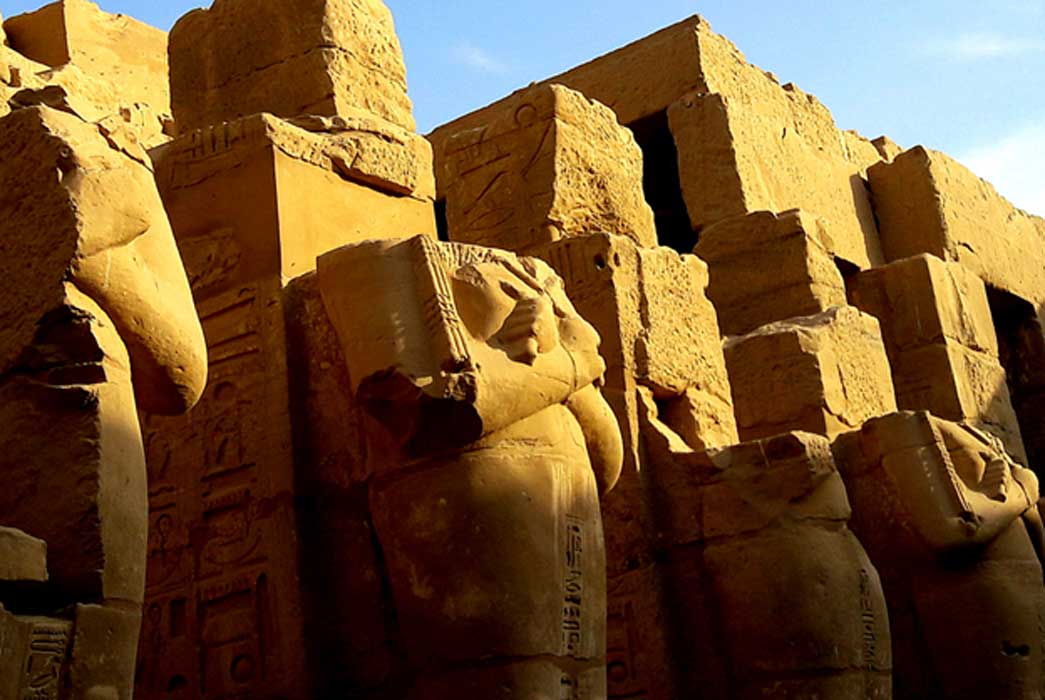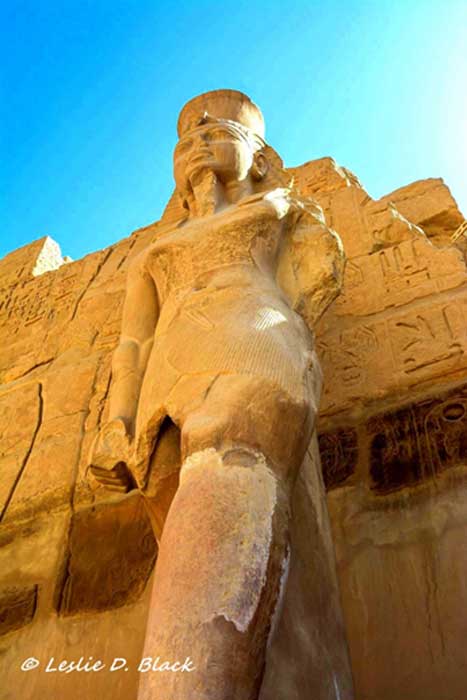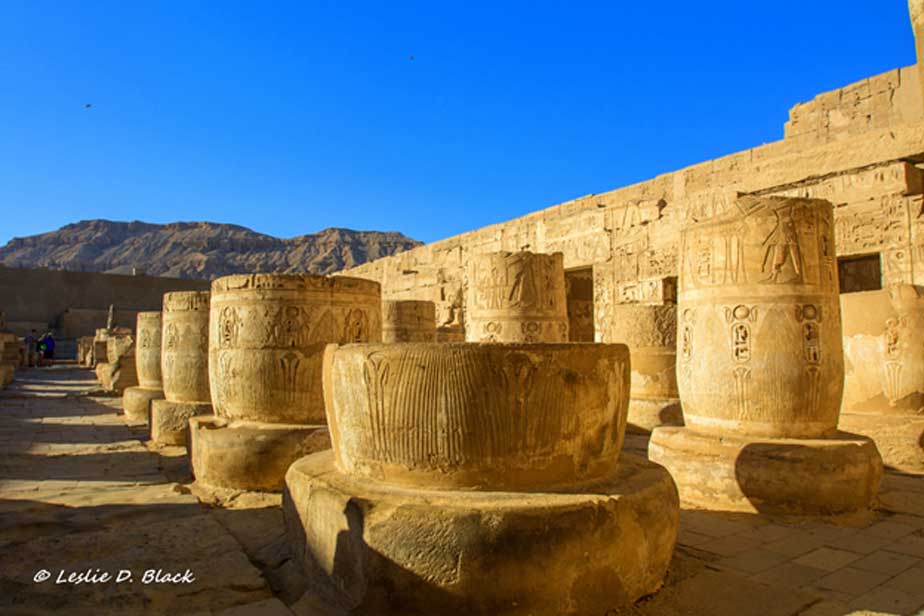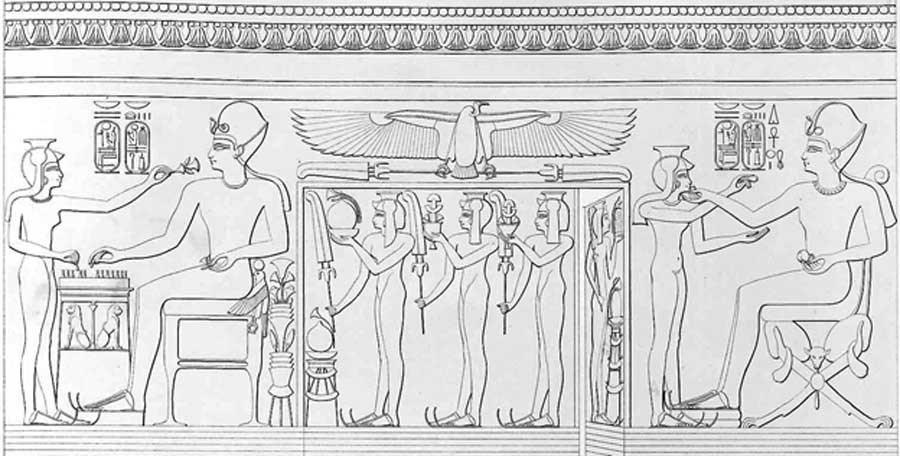
Ramesses III and the Harem Conspiracy: Kingship Saved as Brutal Coup Backfires Miserably – Part II
Even though Pharaoh Ramesses III had been the master of all that he surveyed – striking awe in the hearts of his enemies and earning admiration among his subjects – the glory days were drawing to a close. The survivor of an assassination attempt which was the result of a dastardly scheme of some members of the royal household and also his confidantes, the king who had strode the Egyptian mindscape like a colossus couldn’t have earned a worse end. The conspirators were, of course, subjected to a trial and intense interrogations; and many had to part with their lives for daring to eliminate a god on earth.

The eastern colossus of Ramesses III, standing at around 6 meters against the pylon entrance to the barque-shrine temple at Karnak; erected by the king to receive the barques of the Theban triad. The Pylon that featured traditional scenes of the king smiting his enemies only differed from Karnak’s other similar entrances in its lack of flagstaffs.
The scope and scale of the conspiracy to murder Ramesses III was staggering, not least for the disparate backgrounds of the participants who had a vested interest in toppling the regime of the day. But, their well-laid plans did not come to fruition – at least the manner in which they’d hoped. An alert Prince Ramesses who got wind of the plot in the nick of time did everything in his power to nip the vile attempt at revolution in the bud. However, he too was not entirely successful, because his father, Ramesses III, succumbed to the grievous wounds inflicted by his assailants.
“One of the women had written to her brother, who was a commander of Nubian troops, to win his support. A mass mutiny among the ranks of the army, combined with a revolution in the countryside, would surely distract and weaken the authorities. Finally, to give their plot the best chance of success, the conspirators turned to darker means. They enlisted the help of professional magicians, made wax effigies of their opponents, and composed spells designed to paralyze the harem guards. After weeks of careful planning, everything was in place. The stage was set for regicide and revolution. But the plotters had made a fatal error. With so many people involved, it was virtually certain that someone would blab,” informs Richard Wilkinson.

A view of the remains of massive pillars in the Hypostyle Hall in the Mortuary Temple of Ramesses III at Medinet Habu. The place functioned as a workshop and it was here that many mummies of royals were brought for rewrapping during the ‘restoration’ initiated by the Priest Kings.
The modus operandi of the conspirators is narrated at great length in the Rollin Papyrus: “Now, when Penhuibin, formerly overseer of herds, said to him: "Give to me a roll for enduing me with strength and might," he gave to him a magic roll of Usermare-Meriamon (Ramses III), L.P.H., the Great God his lord, L.P.H., and he began to employ the magic powers of a god upon people. He arrived at the side of the harem, this other large, deep place. He began to make people of wax, inscribed, in order that they might be taken in by the inspector, Errem, [hindering] one troop and bewitching the others, that a few words might be taken in, and others brought out.”





